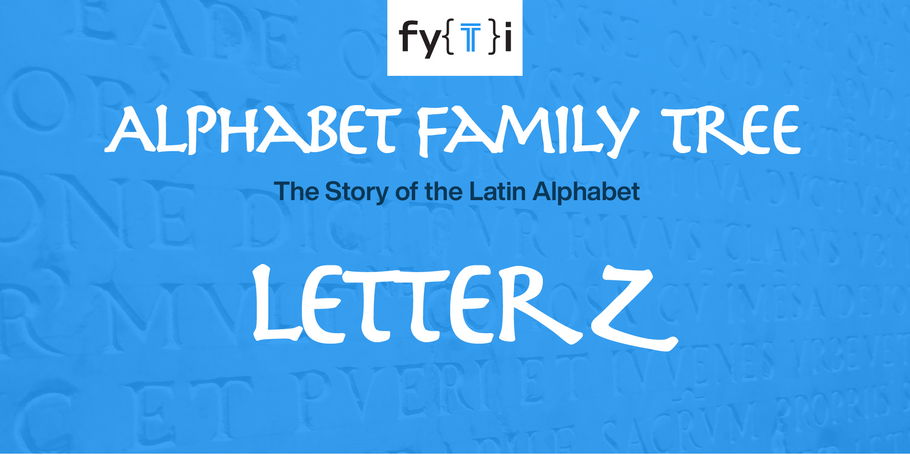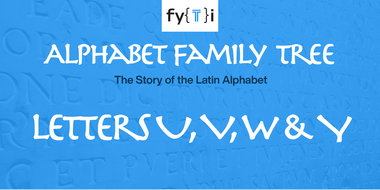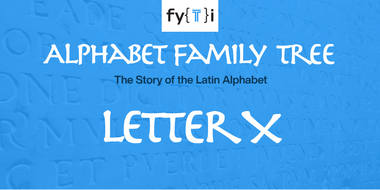Alphabet Tree - The Letter Z

The twenty-sixth letter of our alphabet was the seventh letter in the Semitic alphabet. They called the letter “za” (pronounced “zag”) and drew it as a stylized dagger. The Phoenicians used roughly the same graphic sign, which they called “zayin” and which also meant a dagger or weapon. A similar symbol turns up in various other cultures, all having the same meaning.

Around 1000 B.C. the Phoenician zayin became the Greek “zeta.” The Greek character looked more like a dagger than the zayin, but it didn’t bear much resemblance to the Z we currently use.

In fact, it looked a lot like our present capital I (especially as set in ITC Lubalin Graph, or another slab serif typeface).

The Romans adopted the zeta into their alphabet, but since the sound was not used in the Latin language the letter was eventually dropped, and the position of the seventh letter was given to the G. In fact, the Z might never have made it into our present-day alphabet, if not for a few stray Greek words that were incorporated into the Roman language after the Romans conquered the Greeks. In order to write these words a Z was required, and so, several centuries after it was first banished from the Roman alphabet, the Z was allowed to return. However, because the letter was not a part of the traditional Roman language, the Z was relegated to the last spot in the alphabetical hierarchy.
The Romans used the capital I form of the letter in their monumental inscriptions, but there are none to be found in the famous Trajan Column. (There are no Greek words on the column.)
It was only when the letter was written by scribes and calligraphers that the top and bottom strokes were offset from each other and connected by what became a diagonal, rather than vertical, stroke. The reason for this design change? Probably because it was quicker and easier to write.


Digital technology allowed renowned typeface designer and calligrapher, Hermann Zapf, to realize a decades-old dream. He wanted to make a font based on calligraphic sketches he made in a 1944 sketchbook.
In the early years of Zapf’s career, it was impossible to make a typeface from the highly sloped and overlapping letterforms in the sketchbook. Innovations in digital typography, however, opened the door to create letters with large swashes, overlaps, and multiple alternates.
In 1993, Zapf began a technical collaboration, with David Siegel and Gino Lee, to digitize the 1944 alphabets. Final fonts were completed and released by Linotype GmbH five years later. The Zapfino™ font family consists of four basic alphabets with many stylistic alternates that can be freely mixed together to emulate variations in handwritten text.
Zapfino Extra was released, in 2003, as an expansion to the original family. It enjoys a vast array of alternate characters, hyper-flourishes, and ornaments. Many other script and calligraphy inspired fonts have followed – but Zapfino was a first.
Download a PDF version of the Alphabet Tree - The Letter Z and view the Zapfino® Extra font family.


